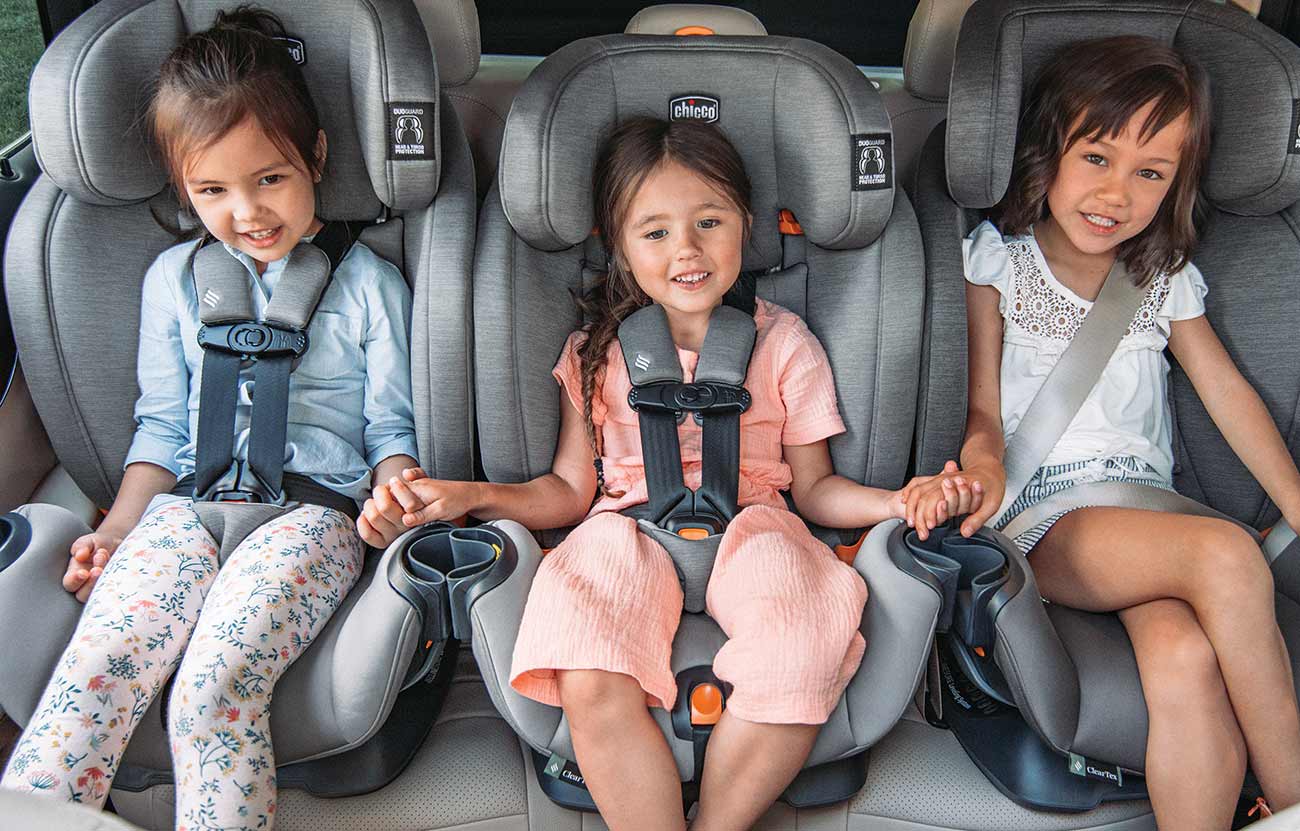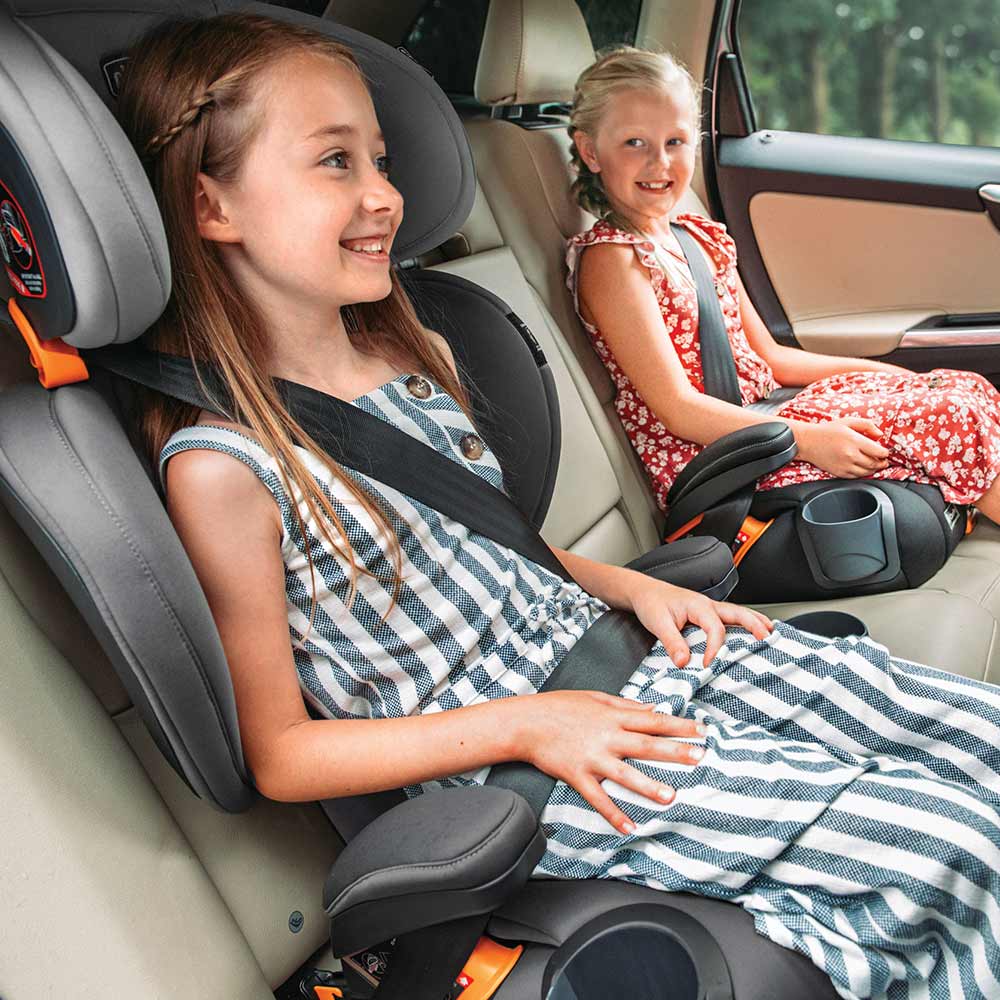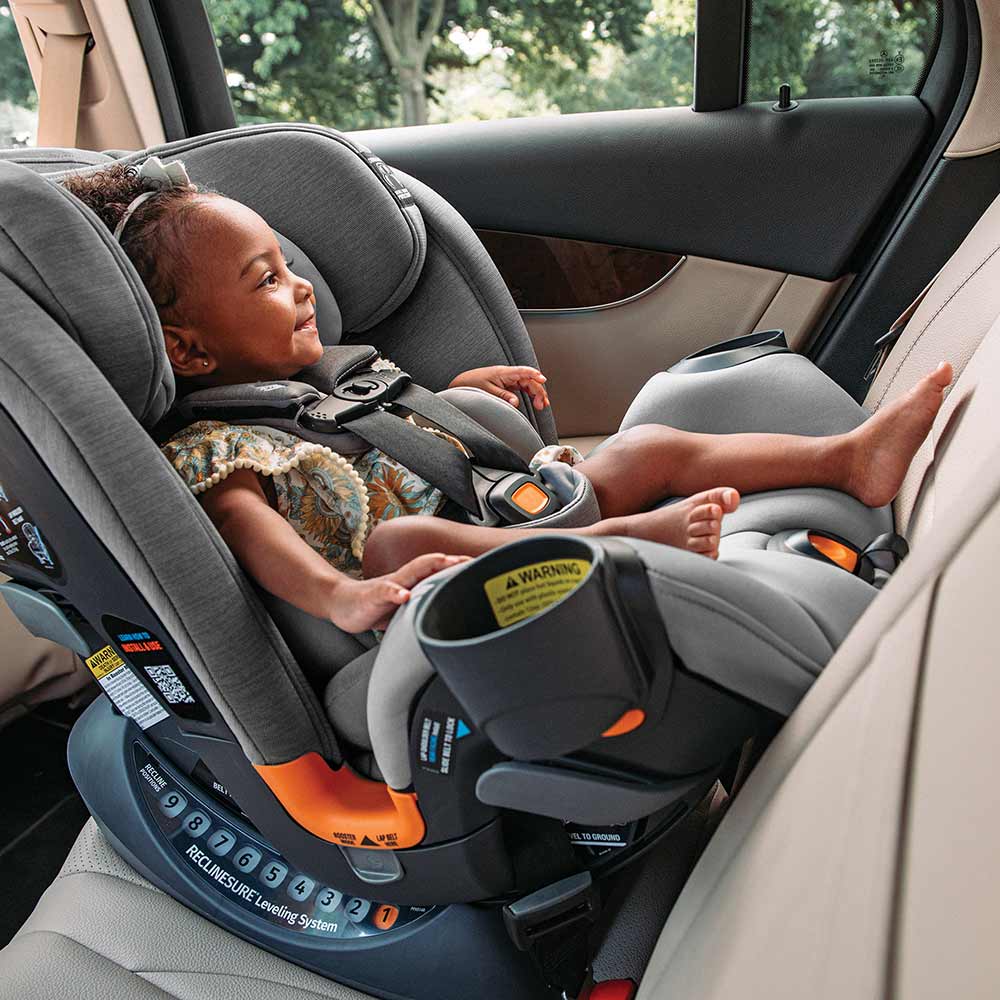Setting up your child with the appropriate car seat means taking a lot of data into consideration. There's child weight, height, age, level of maturity, car seat orientation, and variability of car seat types as well as vehicles. Yeah, it's a lot—and understandably, sometimes parents can get it wrong.

When correctly installed, car seats protect infants and children and are backed by extensive crash test data to prove their usefulness. Yet the National Highway Transportation Administration (NHTSA) reports that 46 percent of car seats and booster seats are installed incorrectly. We put together the following list of the top 10 car seat mistakes to help parents provide proper car seat protection for their kids.
Before we get started, it's important to know that the information below doesn't substitute or replace the instructions found in your manufacturer-supplied car seat manual. If a physical copy did not come with your model or you lost it, check the manufacturer's website for a digital version. With that in mind, keep reading to learn more about our top 10 mistakes that impact car seat safety.
1. You’re using the wrong car seat
From rear-facing to booster, there are several types of car seats that your child will ride in before using a seatbelt only. If you have your child in the wrong one, it's vital to exchange or replace it for the correct one.
But how do you know which seat is right for your child? As children grow in height and weight, they graduate through the following car seat styles:
- Rear-facing seat - A car seat designed for infants and toddlers that positions them facing the vehicle's rear. Many states have laws detailing to what weight or age a child must ride rear-facing, so check to see your state’s requirements in addition to the height and weight requirements from your car seat manufacturer. Once your child outgrows the manufacturer’s height and weight or age requirements for riding in your rear-facing seat model, it’s time to move up to a forward-facing one.
- Forward-facing car seat - A car seat with the opposite orientation, designed for older children facing the vehicle's front. Children usually start facing forward in a convertible car seat, which can be flipped between both orientations. Eventually, they will outgrow the convertible seat’s height and weight requirements and move into a booster car seat.
- Booster seat - These are belt-positioning seats intended to correctly position the occupant to safely use the vehicle seat belt as a restraint. Once your child graduates from a booster seat, they’re ready to sit directly in the vehicle seat.
Check your car seat's manual to determine if your child is within the seat’s recommended range for height and weight. If not, it's time for a new seat! Parents can easily pick out the right car seat using our comprehensive guide to choosing a child safety seat.
For more information on when to transition your child to the next car seat in the lineup, read your specific product manual and follow federal guidelines from the NHTSA. The national recommendations are often stricter and safer than their state-level counterparts.
2. You were too quick to transition
Now that you have the correct car seat, use it for a while! One common car seat mistake is quickly transitioning your child through the range of car seat styles. Of course, we get it—milestones with your child are proud moments that parents like to celebrate.
But unlike your child's first time successfully blowing out their birthday candles, graduating to the following car seat style isn't something to rush into. Think of it like this. Each successive car seat type offers less relative protection, so why switch if your child is still within your current car seat's height and weight requirements? Always maximize each car seat mode of use! And always stay rear-facing as long as possible.
3. Your car seat is facing the wrong way
Likewise, parents should keep their child in a rear-facing car seat for as long as they remain within the rear-facing specifications for height and weight—not just until age two. That's because rear-facing seats are objectively safer. They offer better head and neck protection during an accident and are superior at dissipating force across the car seat's shell.
Some parents switch their child to a forward-facing position due to fears of their child being uncomfortable, but this is typically unfounded. If your child voices discomfort, attempt to help them find a comfortable position—like crossing their legs or resting their legs on the back of the seat—before prematurely flipping the car seat around.
On average, a two-year-old weighs 27 pounds and measures close to 34 inches in length—but the rear-facing specifications for some car seats are much higher than that. For example, our NextFit Max line of convertible car seats is designed to provide extra rear-facing leg room for kids weighing up to 50 lb and measuring up to 43 inches tall in rear-facing mode.
4. You aren’t following weight AND height guidelines

It's easy to find information online to suggest which age is appropriate for specific car seat styles. However, most car seat requirements have nothing to do with your child's age. Instead, parents should determine the right car seat style based on the height, weight, and maturity of their child. Furthermore, each car seat model within a category will have its own specific guidelines provided by the manufacturer. Both measurements are equally important and work together to bolster your child's safety. Whether you've been following age guidelines or aren't following height and weight guidelines in tandem, it's time to break out the car seat manual and rectify that.
5. The car seat is installed incorrectly
A car seat should be installed snuggly into your vehicle with no more than one inch of play from front to back or side to side at the point of attachment. If your child's car seat uses the built-in anchors in your vehicle, don't place it in the center position on a bench seat in your car and secure it to the inner anchors on either side (unless both the vehicle and car seat manufacturers explicitly allow it). If your car seat secures with your vehicle's seatbelt, don't forget to lock the vehicle belt by extending it all the way so that it clicks when retracted and ratchets into and maintains its position.
Another car seat installation mistake is to use the seatbelt and the car seat anchors simultaneously. Some car seats do secure using the seatbelt, others use the anchors in your car, and some give you the option of either method. However, crash-test data doesn't support using both restraints at once, so to do so is to gamble on how your car seat will behave in an accident.
Pro Tip: Make sure you find and read the instruction manual for your specific product. If a physical copy did not come with your model or you lost it, check the manufacturer's website for a digital version.
6. The child safety harness isn’t positioned correctly
It's important to have proper tightness when securing your child in a car seat harness. To test for this, buckle your child and try to pinch or fold the straps over the child's shoulders. If you can grasp the webbing between your fingers, tighten the straps. Or, perhaps the car seat itself needs an adjustment to achieve the proper setup.
Many car seats include multiple harness strap adjustment slots for proper restraint of your child as they grow. If your tot still rides facing backward, the shoulder straps should connect with the seat back at or below shoulder level for your child. Forward-facing big kids need the straps raised to be at or above their shoulders. In any case, keep the chest clip at armpit level.
Pro Tip: A child's level of dress can affect the tightness of their harness. Puffy down jackets and bulky blankets are best placed over the straps instead of between the straps and your child.
7. You skipped the top tether for a forward-facing seat
Some car seats feature a rear strap with a hook, called a tether, that anchors the seat to a predetermined mounting point on the vehicle—usually on the back of the vehicle's seat, rear shelf, or ceiling. According to the non-profit organization Safe Kids Worldwide, this feature is "essential for safety but consistently overlooked."
According to a study done by the organization, 64 percent of parents were not using the tether on their forward-facing seats. This is problematic because the tether effectively prevents forward-facing car seats from tipping forward during a crash. When installing yours, don't forget the tether!
8. Your rear-facing seat isn’t at the right angle

When riding in your vehicle, newborns and infants without developed head and neck control need to recline to a specific angle in a rear-facing car seat. As the child grows and develops, that angle can change, even while using the same car seat. There is no universal angle to use, as each manufacturer sets their own based on crash testing data for that specific product. However, no rear-facing car seat is allowed to rotate beyond 70 degrees from upright, as this could distribute too much force across the child's body.
All rear-facing car seats feature a level indicator to help you quickly find the appropriate angle for that product and your baby. When you do this, take the level of the surrounding terrain into consideration, as you'll get different results on the incline of your driveway compared to any flat, paved area like a shopping mall parking lot. If this isn't taken into account, it can contribute to an incorrectly angled car seat despite the level indicator appearing correct at the time of measurement. Most rear-facing car seats offer newborn and infant inserts, that are required to be removed once a child exceeds 11lbs or more. Follow the car seat instruction manual guidelines on best practices.
9. You are using unapproved accessories
Unless your car seat manufacturer allows it, don’t place any rolled-up towels or pool noodles under a rear-facing car seat to achieve the proper recline. Similarly, never put any extra padding in the bucket of the seat underneath or behind the child. Other common accessories that are not approved unless specifically made by your manufacturer and crash-tested include toys dangling from the handle and seat protectors placed beneath the car seat. If needed, Chicco features an approved Newborn Positioner for a better fit for smaller infants (weighing no more than 11 pounds).
10. You don’t know the history of your car seat
We recommend buying a brand new car seat, but if you end up with a hand-me-down or buy used, you want to make sure you know everything that the seat has already been through. Has it been in a crash? Has the car seat been subject to a product recall? Have parts been replaced? Was it treated well or under stress from being left outside or piled on in the garage? If you can’t figure out the answer to these questions and feel very confident in the information you've gathered, your best bet is to buy new.
Proper car seat installation and usage are crucial to your child’s safety. Don't rely on instincts or the well-meant advice of a friend or a parent from down the block. When it comes to important matters like this, professional advice is best. It's easy to get your seat checked by a trained technician who will point out any errors in your car seat handiwork. This service is typically free of cost and can dramatically increase your child's safety on the road if you unwittingly committed one of these car seat no-nos.
To do so, look for a child safety seat inspection station where trained technicians are available to inspect and correct your work. You'll often find them at fire stations, police stations, and even hospitals. Enter your city and state or zip code on the NHTSA website to find a qualified technician near you.
Pro Tip: You can also register your car seat with the manufacturer to sign up for important communications like safety recalls, alerts, and updates.
Hopefully, the tips and advice in this article helped you feel more comfortable with your car seat installation or gave you the tools and resources to up your car seat game. Whether you’re carting around your first little one or your third, we’re here for your parental journey with the baby gear you need to feel comfortable at home or on the road.
Explore our full lineup of car seats, compare your options, or learn more about which style is right for your child.
AAP's five recommendations for optimal safety:
- All infants and toddlers should ride in a rear-facing car safety seat as long as possible, until they reach the highest weight or height allowed by the seat's manufacturer.
- All children who have outgrown the rear-facing weight or height limit for their car safety seat should use a forward-facing car safety seat with a harness for as long as possible, up to the highest weight or height allowed by the seat's manufacturer.
- All children whose weight or height is above the forward-facing limit for their car safety seat should use a belt-positioning booster seat until the vehicle lap and shoulder seat belt fits properly, typically when they have reached 4 feet 9 inches in height and are between 8 and 12 years of age.
- When children are old enough and large enough to use the vehicle seat belt alone, they should always use lap and shoulder seat belts for optimal protection.
- All children younger than 13 years should be restrained in the rear seats of vehicles for optimal protection.
